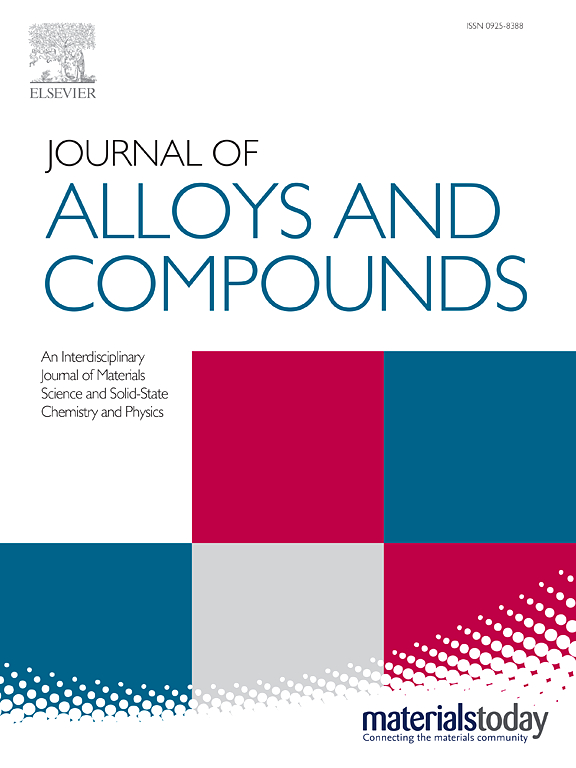Polycrystalline BiSb Alloys with Enhanced Thermoelectric Performance: The Role of Titanium Doping and Band Engineering
IF 5.8
2区 材料科学
Q2 CHEMISTRY, PHYSICAL
引用次数: 0
Abstract
Bismuth antimonide (BiSb) alloys are promising thermoelectric materials for cooling applications. However, their performance in polycrystalline form and the impact of doping remain underexplored. Here, we report a systematic study of the thermoelectric properties of titanium-doped polycrystalline Bi1-xTixSb (x = 0 – 0.0025), complemented by density functional theory (DFT) calculations. Contrary to conventional wisdom, the polycrystalline samples exhibit higher electrical conductivity than a single-crystal reference. Ti doping enhances the Seebeck coefficient by increasing the density-of-states effective mass, leading to a 50% improvement in the power factor for x = 0.0015 at 300 K. Simultaneously, the thermal conductivity is markedly reduced due to the combined effects of grain boundary and point defect scattering, reaching a value of 2.14 W m-1 K-1 for x = 0.0015. Consequently, a peak zT of ~ 0.21 is obtained at 300 K, a fivefold increase over single-crystal BiSb. DFT calculations reveal that Ti doping induces the convergence of heavy and light conduction bands, resulting in increased valley degeneracy and enhanced density-of-states near the Fermi level, which is identified as the primary mechanism for the significant enhancement of the Seebeck coefficient. These findings underscore the untapped potential of polycrystalline BiSb alloys and the critical role of targeted doping in optimizing their thermoelectric performance for near-room-temperature applications.求助全文
约1分钟内获得全文
求助全文
来源期刊

Journal of Alloys and Compounds
工程技术-材料科学:综合
CiteScore
11.10
自引率
14.50%
发文量
5146
审稿时长
67 days
期刊介绍:
The Journal of Alloys and Compounds is intended to serve as an international medium for the publication of work on solid materials comprising compounds as well as alloys. Its great strength lies in the diversity of discipline which it encompasses, drawing together results from materials science, solid-state chemistry and physics.
 求助内容:
求助内容: 应助结果提醒方式:
应助结果提醒方式:


